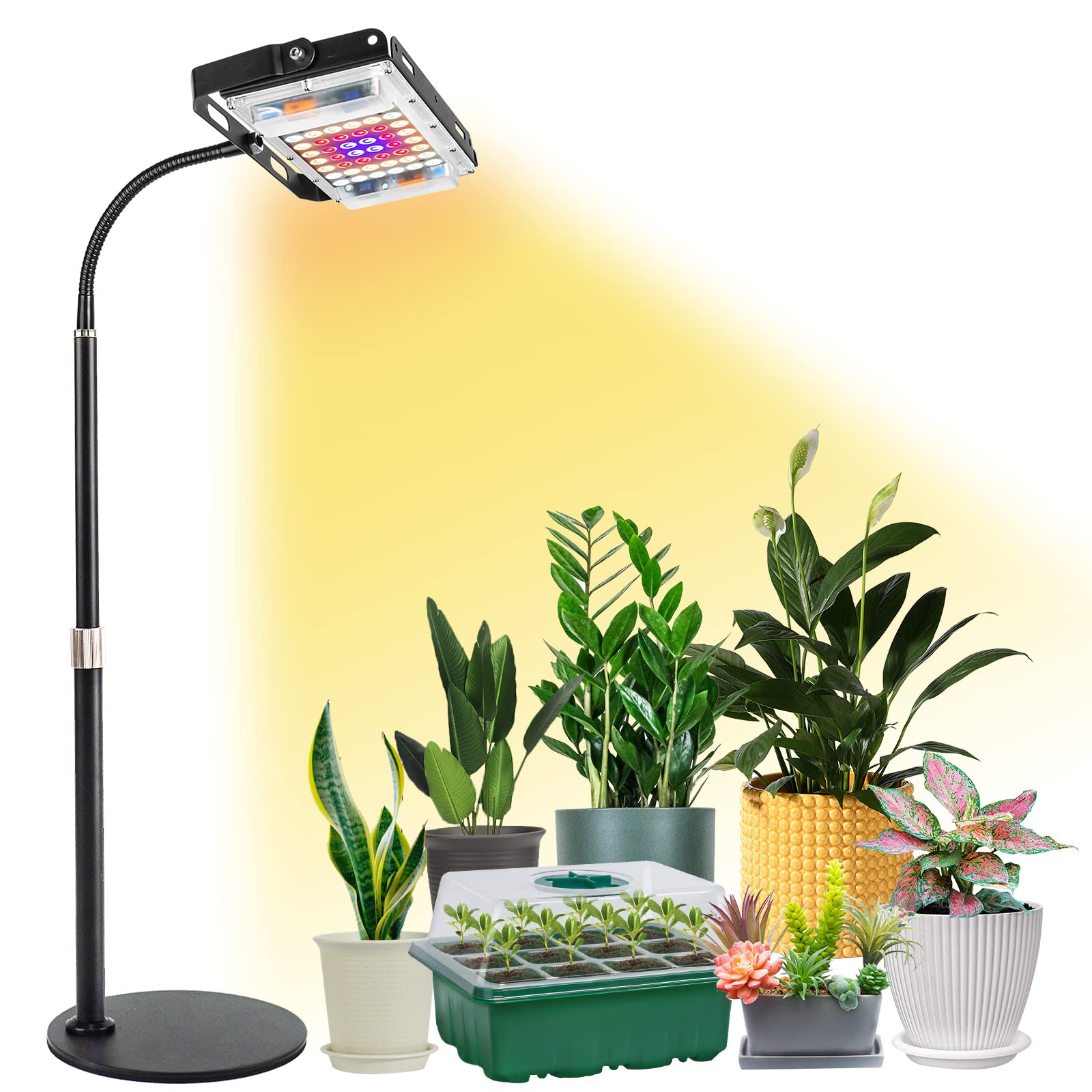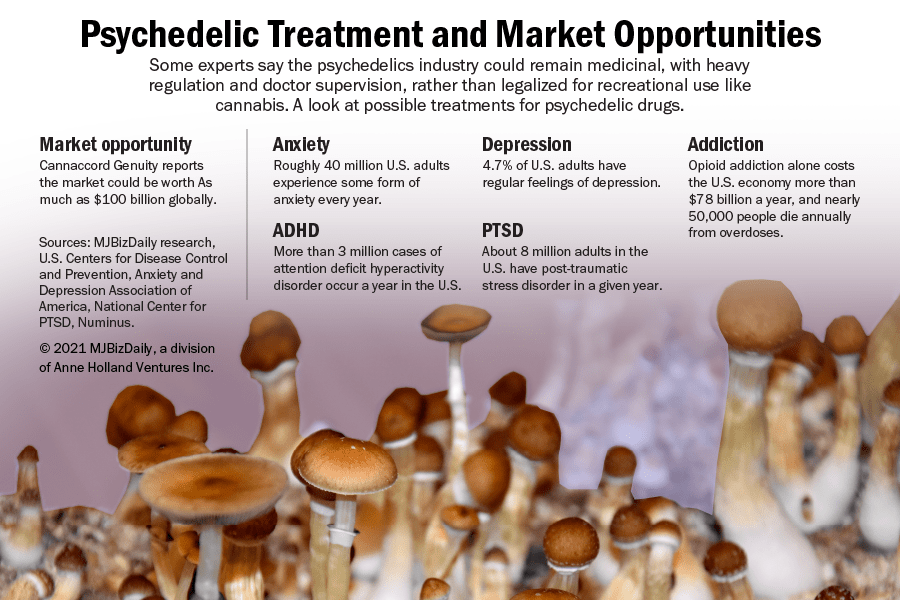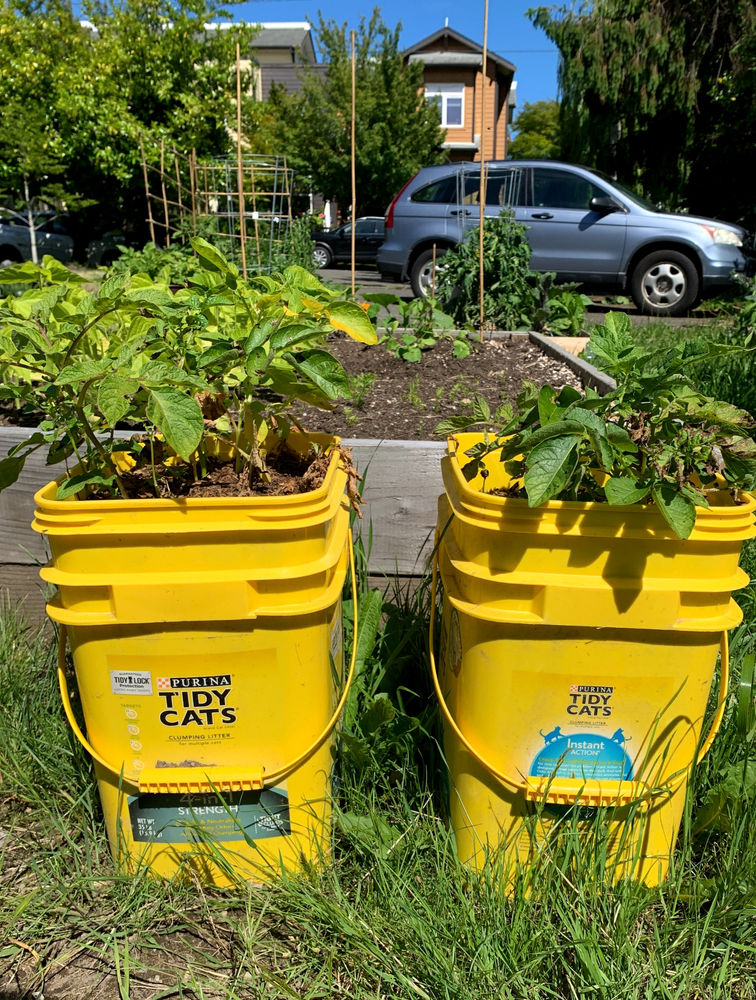A grow light is an essential tool for indoor plants to thrive by providing the necessary sunlight spectrum for photosynthesis. Indoor plants require sufficient light exposure for healthy growth, but sometimes, they do not receive adequate sunlight due to limited access to natural light sources.
This is where grow lights come in. They are artificial light sources designed to mimic the spectrum of sunlight, providing the necessary wavelengths for photosynthesis. With a wide variety of options available in the market, choosing the right grow light can significantly enhance your indoor plant’s growth and overall health.
We will explore the benefits of using grow lights, the different types available, how to choose the right one for your plants, and some essential tips for proper usage. So, let’s dive in and discover everything you need to know about grow lights for your indoor plants!

Credit: www.amazon.com
Table of Contents
Benefits Of Using Grow Lights
Using grow lights can significantly improve the growth of your indoor plants, allowing you to create an ideal growing environment at any time of the year. Whether you are a beginner or an experienced gardener, here are three key benefits of using grow lights for your indoor plants.
Improved Plant Growth
Grow lights provide a concentrated source of light that is essential for plants to carry out photosynthesis effectively. By using grow lights, you can ensure that your indoor plants receive the right amount of light they need to grow and thrive. These lights emit a spectrum of light that closely mimics the sunlight, allowing your plants to absorb the necessary wavelengths for optimal growth.
Without adequate natural sunlight, plants can become weak and leggy. However, with the use of grow lights, you can promote healthier and bushier growth by giving your plants access to a constant light source. This helps prevent elongated stems and encourages robust foliage, leading to overall stronger and more vibrant plants.
Year-round Planting
One of the significant advantages of using grow lights is the ability to grow plants all year round, regardless of the external weather conditions. Traditional gardening often relies on natural sunlight, making it challenging to grow certain plants during the winter months when daylight hours are limited.
With grow lights, you can provide your indoor plants with the necessary light they need regardless of the season. This means you can cultivate a wide range of plants, including fruits, vegetables, and herbs, throughout the year. Whether you want to enjoy fresh herbs in the middle of winter or start your vegetable garden early before spring arrives, the use of grow lights allows you to have a continuous harvest no matter the weather.
Controlled Environmental Conditions
Grow lights give you the ability to maintain a controlled environment for your plants, ensuring they receive the optimal conditions for growth. Whether you have limited natural light in your home or wish to create specific lighting conditions for certain plant species, grow lights offer flexibility and precision in adjusting the light intensity and duration.
Using grow lights, you can tailor the light spectrum, temperature, and humidity levels to meet the specific requirements of your plants. This level of control allows you to optimize growth and address any unique needs of different plant varieties. Additionally, grow lights help mitigate the effects of unpredictable weather, pests, and diseases commonly associated with outdoor gardening.
With the benefits of improved plant growth, year-round planting, and controlled environmental conditions, it’s clear why many indoor gardeners rely on grow lights to enhance their gardening efforts. So, if you’re looking to create a thriving indoor garden, investing in quality grow lights is the way to go!

Credit: www.walmart.com
Types Of Grow Lights
When it comes to growing plants indoors, using the right grow lights is essential for promoting healthy growth and maximizing yield. There are different types of grow lights available in the market, each offering unique benefits for indoor plants. In this blog post, we will explore the various types of grow lights, including fluorescent, LED, and high-intensity discharge (HID) lights.
Fluorescent Grow Lights
Fluorescent lights are a popular choice for indoor gardeners due to their energy efficiency and affordability. These lights come in two main varieties: T5 and T8. T5 fluorescent tubes are thinner and more efficient than T8 tubes, making them ideal for seedlings and young plants. T8 are suitable for general plant maintenance and are readily available in various sizes and configurations.
Led Grow Lights
LED grow lights have gained popularity for their energy efficiency and long lifespan. They offer a wide spectrum of light that can be customized to match the specific needs of different plants at various stages of growth. LED lights emit very little heat, reducing the risk of damaging plants and keeping energy costs down. Additionally, they are environmentally friendly as they contain no hazardous materials such as mercury.
High-intensity Discharge (hid) Grow Lights
HID grow lights are known for producing intense light suitable for all stages of plant growth. These lights are available in two main types: metal halide (MH) and high-pressure sodium (HPS). MH lights emit a bluish-white light spectrum, promoting vegetative growth, while HPS lights emit a reddish-orange spectrum that encourages flowering and fruiting. They are a popular choice for commercial growers due to their high light output and coverage area.
Factors To Consider When Choosing Grow Lights
Factors to consider when choosing grow lights for indoor plants include the light spectrum, wattage, coverage area, and energy efficiency. These factors are essential in providing optimal conditions for plant growth and ensuring healthy, thriving indoor gardens.
Factors to Consider when Choosing Grow Lights
When it comes to growing plants indoors, choosing the right grow lights is crucial for their healthy growth and development. Several factors need to be taken into consideration to ensure you select the most suitable grow lights for your indoor plants. Here, we will discuss three key factors: Light Spectrum, Light Intensity, and Energy Efficiency.
Light Spectrum
The light spectrum refers to the range of wavelengths emitted by the grow lights. Different wavelengths have varying effects on plant growth, so it’s important to choose lights that provide the appropriate spectrum for the specific stage of plant growth. Plants require both red and blue light for photosynthesis, with red being essential for flowering and fruiting, and blue for promoting vegetative growth. A grow light with a customizable spectrum, such as LED lights, allows you to adjust the light output to meet the specific needs of your plants.
Light Intensity
Light intensity is a measure of the amount of energy emitted by the grow lights and is essential for determining the overall growth and development of your plants. A light meter can be used to measure light intensity, also known as the photon flux density (PPFD). Different plants have varying light intensity requirements, so it’s important to match the light output of the grow lights to the needs of your plants. High-intensity lights, such as metal halide or LED lights, are ideal for plants that require bright light, while fluorescent lights are better suited for plants that thrive in lower light conditions.
Energy Efficiency
Energy efficiency is an important consideration when choosing grow lights, as it not only reduces electricity costs but also contributes to environmental sustainability. Look for grow lights that have a high efficiency rating, such as LED lights, which convert a greater proportion of energy into usable light. LED lights are known for their longevity and energy-saving capabilities, making them a popular choice among indoor gardeners. Additionally, LED lights produce less heat compared to other types of grow lights, reducing the risk of heat damage to your plants.
In conclusion, when selecting grow lights for your indoor plants, it’s essential to consider factors such as light spectrum, light intensity, and energy efficiency. By understanding the specific light requirements of your plants and choosing suitable grow lights accordingly, you can create the ideal environment for healthy and thriving indoor gardens. By focusing on these factors, you can ensure optimal growth and maximized yields for your indoor plants. Happy growing!
:max_bytes(150000):strip_icc()/how-to-use-grow-lights-for-indoor-plants-5221241-hero-555a096c1048459db820c67ea4b9c495.jpg)
Credit: www.thespruce.com
Setting Up An Indoor Grow Light System
Setting up an indoor grow light system is crucial for successfully growing plants indoors. Often, natural light may not be sufficient for plants, especially during the winter months or in homes with limited sunlight. A grow light system ensures that your indoor plants receive the necessary light to thrive and grow. In this section, we will discuss the important steps involved in setting up an indoor grow light system.
Determining Lighting Requirements
The first step in setting up an indoor grow light system is determining the lighting requirements of your plants. Different plants have varying light intensity and duration needs. Some plants, like succulents, require intense light for a shorter period, while others, like leafy greens, need moderate light for longer durations. To determine the lighting requirements:
- Identify the type of plants you’ll be growing indoors.
- Research the lighting needs of each plant species.
- Note down the recommended light intensity in foot candles or lux, as well as the daily light duration in hours.
By understanding the lighting requirements of your plants, you’ll be able to choose the right grow lights and set up an effective lighting schedule.
Positioning The Lights
Proper positioning of the grow lights is essential to ensure uniform light distribution and optimal plant growth. Here are a few tips for positioning the lights:
- Hang the lights directly above the plants to provide maximum coverage.
- Adjust the height of the lights as the plants grow, maintaining an optimal distance of 6-12 inches between the light source and the top of the plants.
- If using multiple grow lights, position them evenly to ensure uniform lighting across all plants.
It is also important to ensure that the grow lights are securely attached and stable to avoid any accidents or damage to the plants.
Monitoring And Adjusting The Lighting
Once you have set up the grow lights, it is crucial to monitor and adjust the lighting as needed. Plants may show signs of overexposure or underexposure to light, which can affect their growth. To effectively monitor and adjust the lighting:
- Regularly check the plants for any signs of stress or damage, such as yellowing leaves or stunted growth.
- Use a light meter or smartphone app to measure the light intensity and ensure it matches the recommended levels for your specific plants.
- Adjust the light duration and intensity accordingly if you notice any issues with plant growth. Increase or decrease the lighting duration or adjust the height of the lights accordingly.
By continuously monitoring and adjusting the lighting, you can create an ideal environment for your indoor plants to thrive and flourish.
Tips For Using Grow Lights Effectively
If you’re new to using grow lights for indoor plants, learning how to use them effectively is essential for the healthy growth of your plants. By following some helpful tips, you can ensure your plants receive the right amount of light and thrive in an indoor environment.
Maintain Proper Distance
One crucial factor in using grow lights effectively is maintaining the proper distance between the light source and your plants. Different types of plants require varying light intensity, so it’s important to research the specific needs of your plants. As a general rule of thumb, leafy plants should be positioned around 6-12 inches away from the grow light, while flowering plants may require a distance of 12-24 inches.
Follow A Lighting Schedule
Establishing a consistent lighting schedule is key to promoting optimal plant growth. Create a schedule based on the light requirements of your plants, typically providing 14-16 hours of light per day. Utilize a timer to maintain the regularity of the lighting cycle, ensuring your plants receive the necessary light for photosynthesis and development.
Consider Light Cycling
Light cycling involves mimicking the natural light cycles experienced by outdoor plants. To encourage healthy growth and flowering, consider alternating between periods of light and darkness. For instance, use a cycle of 18 hours of light followed by 6 hours of darkness for vegetative growth, and 12 hours of light followed by 12 hours of darkness to promote flowering.
“`
By following these tips, you can effectively use grow lights to support the growth and development of your indoor plants. Whether you’re cultivating herbs, vegetables, or flowers, implementing the proper distance, lighting schedule, and light cycling can make a difference in the health and vibrancy of your plants.
Conclusion
Investing in a quality grow light for your indoor plants can significantly enhance their growth and health. By providing the right spectrum of light and intensity, these lights mimic natural sunlight and enable plants to thrive indoors. With the right knowledge and equipment, anyone can create a flourishing indoor garden.









